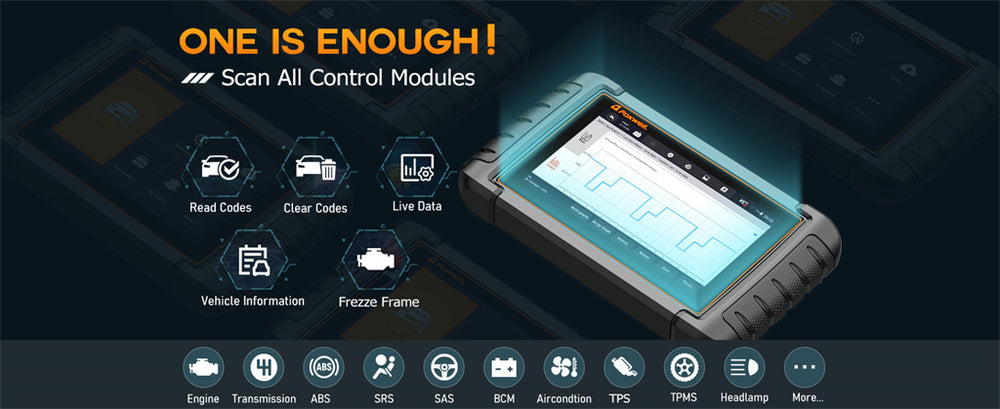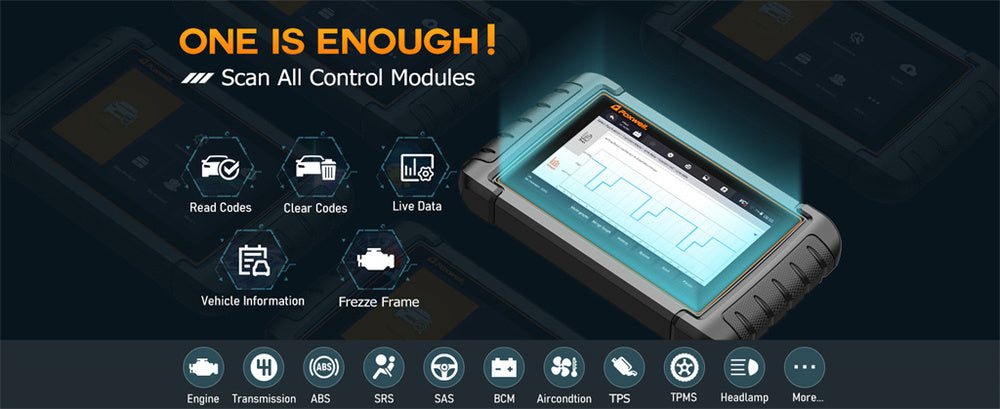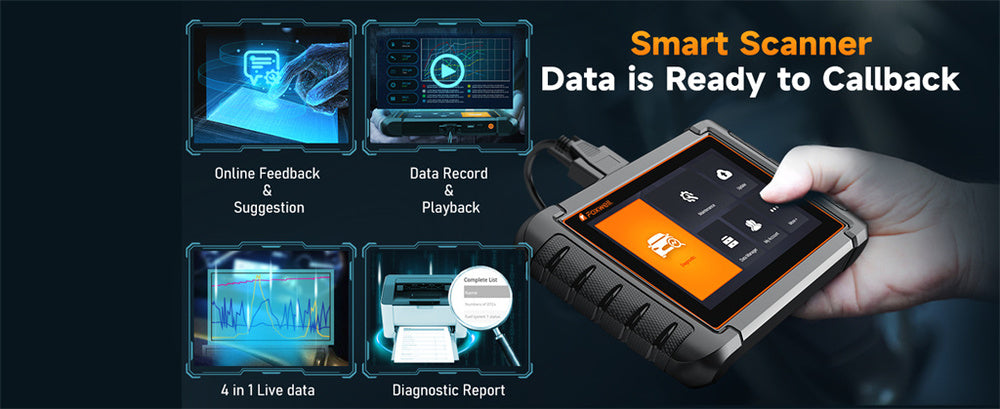Vehicle diagnostics scanner has evolved tremendously in the modern era. One significant advancement that aids this task is the On-Board Diagnostics II scanner.
Over time, these devices have come to feature automated code-scanning tools, which have made diagnostics faster and more precise than ever. There explores its importance, its features, practical applications, and best practices for successful usage.
Benefits of Automated Code Scanning in OBD2 Scanners

Efficiency in Diagnostics: Automated code scanning drastically speeds up diagnostic processes. Traditional manual diagnostics can take hours of careful inspections of various vehicle parts, with automated OBD2 scanners quickly swiping through vehicle systems and detecting issues within minutes - saving both professional mechanics and DIY enthusiasts both time and increasing productivity.
Accuracy and Consistency: Manual diagnostics are vulnerable to human error, leading to misdiagnoses. Automated code scanning tools eliminate this risk by consistently and accurately reporting their results - using predefined algorithms for fault detection that allow these automated code scanners to identify even subtle issues so as to maintain vehicle health while preventing long-term damage.
This level of precision is key for keeping vehicle maintenance costs under control and protecting long-term performance.
Ease of Use: Automated code scanning makes vehicle diagnostics accessible to non-experts without the need for extensive mechanical knowledge to operate them.
Instead, this automated process guides them through diagnostics, interpreting complex data in an understandable format, empowering vehicle owners to take charge of their maintenance and reducing reliance on professional services for basic diagnostics.
Key Features of Automated Code Scanning in OBD2 Scanners
Real-Time Data Analysis in OBD2 Scanners
Automated code scanning stands out with its real-time data analysis capability. It offers instant feedback on any detected issues and instantaneous feedback for intermittent problems that might not show up during static scanning.
This feature makes automated code scanning particularly valuable in pinpointing intermittent issues that might otherwise go undetected during static inspection.
Automatic Code Detection and Reporting
Automated OBD2 scanners detect and report diagnostic trouble codes (DTCs) automatically. Once an issue is identified, the scanner generates a detailed report outlining its nature, potential causes, and severity - helping users quickly understand its nature without having to decode complex codes manually.
Integral Troubleshooting Tips
Many advanced OBD2 scanners feature integrated troubleshooting tips based on detected codes. This feature offers potential solutions and steps for addressing issues, assisting users through the repair process and providing expert advice while eliminating professional intervention - an invaluable feature for DIY enthusiasts who prefer DIY repair jobs over professional repairs.
How to Implement Automated Code Scanning with OBD2 Scanners
Utilizing OBD2 scanners like Foxwell's NT909 can significantly enhance vehicle diagnostics.
Start With OBD2 Setup and Configuration: Before performing diagnostics on any vehicle, first perform proper setup and configuration of an OBD2 scanner. Connect a Foxwell NT909 or similar device to its OBD2 port - usually under the dashboard - using its plug-and-play functionality.
Most modern scanners don't require much adjustment before being plug-and-play; however, to ensure accurate diagnostic results, this step must be completed successfully for each car model.
Integration With Mobile Apps and PCs: Many OBD2 scanners, like the Foxwell NT909, can integrate seamlessly with mobile apps and PC software to enhance their capabilities.
Users can connect their scanners wirelessly or Bluetooth to smartphones or computers to access advanced features and detailed reports; this integration enables more comprehensive analysis as well as easier data management.
Utilize Automated Reports: Once a scanner completes its diagnostic process, an automated report is generated and presented back to users for review.
Care should be taken when reviewing these reports in order to note any detected issues and recommended actions; automated reports simplify the interpretation of diagnostic data so users can make more informed decisions about repairs or maintenance that may be required.
Practical Applications and Examples
Routine Maintenance: Automated code scanning can be invaluable when it comes to routine vehicle maintenance; regularly scanning for potential issues that might surface before they worsen allows for proactive repairs.
A scanner could identify a failing sensor or minor exhaust leak that can be addressed during regular service appointments - potentially avoiding more serious problems down the line.
Automated OBD2 scanners are invaluable tools for pre-purchase vehicle inspections, helping buyers make informed decisions without purchasing cars with potential issues that would otherwise remain hidden during a visual examination. Automated scans allow buyers to identify any hidden issues before buying used cars with potentially fatal flaws.
Troubleshooting and Repairs: Automated diagnostics have demonstrated their practical value through real-life examples of automated diagnosis.
If a vehicle's check engine light illuminates, for instance, an automated scan can quickly pinpoint its cause - such as a failed oxygen sensor or misfiring cylinder - saving both time and money through targeted repairs.
Challenges and Considerations
Software Updates: Staying current with software updates for accurate diagnostics is of vital importance, with manufacturers frequently issuing upgrades that improve detection algorithms or support new vehicle models.
Users should ensure they keep their scanners up-to-date to take advantage of any features or enhancements introduced over time.
False Positives and Negatives: While automated scanning is highly accurate, it may still produce false positives or false negatives from time to time.
Users should be mindful of these possibilities and consider additional diagnostic steps if necessary.
User Training: Proper user training is essential to realizing the full potential of OBD2 scanners. Users should familiarize themselves with its functionalities and follow best practices for accurate diagnosis.
A proper course provides enough instruction so that users can interpret reports correctly and take necessary actions.

Conclusion
Automated code scanning with OBD2 scanners marks an impressive leap forward in vehicle diagnostics. Their efficiency, accuracy, and user-friendliness make these tools indispensable to both professional mechanics and vehicle owners alike.
By providing real-time data analysis, automatic code detection, and integrated troubleshooting tools, these OBD2 scanners simplify diagnostic procedures while improving vehicle maintenance - investing in one with automated code scanning capabilities would be a wise investment for anyone wanting to ensure the optimal health and performance of their car or truck.
FAQ:
What advantages do automated code scanning tools offer in OBD2 scanners?
They improve diagnostic efficiency, accuracy, and ease of use, making vehicle maintenance faster and more reliable.
How does real-time data analysis benefit vehicle diagnostics?
Real-time data analysis provides instant feedback on issues, helping to detect intermittent problems that might be missed during static inspections.
Can automated code scanning tools help non-experts with vehicle maintenance?
Yes, these tools simplify diagnostics, providing easy-to-understand reports and troubleshooting tips, empowering users to manage basic vehicle maintenance.




Leave a comment
This site is protected by hCaptcha and the hCaptcha Privacy Policy and Terms of Service apply.